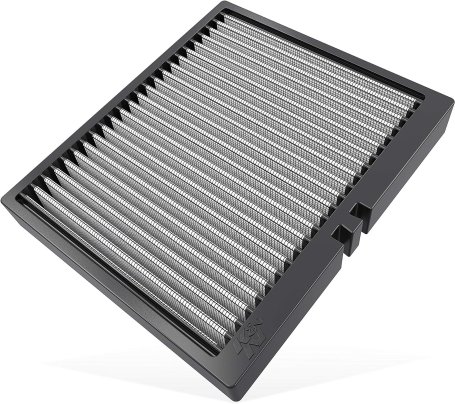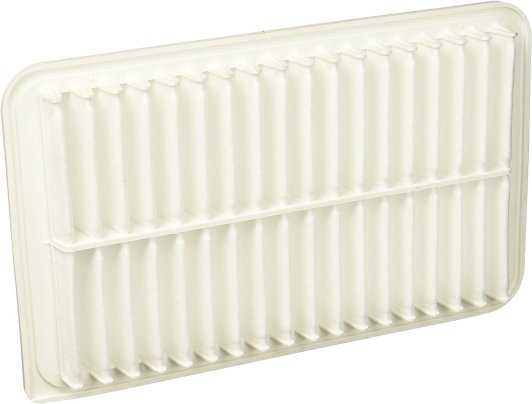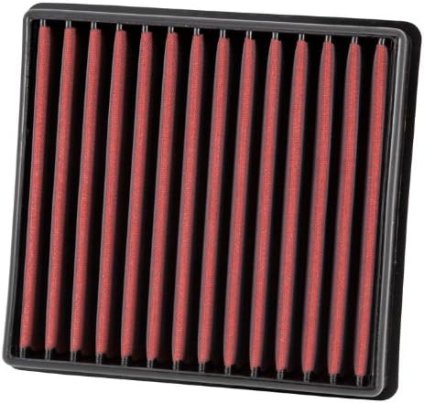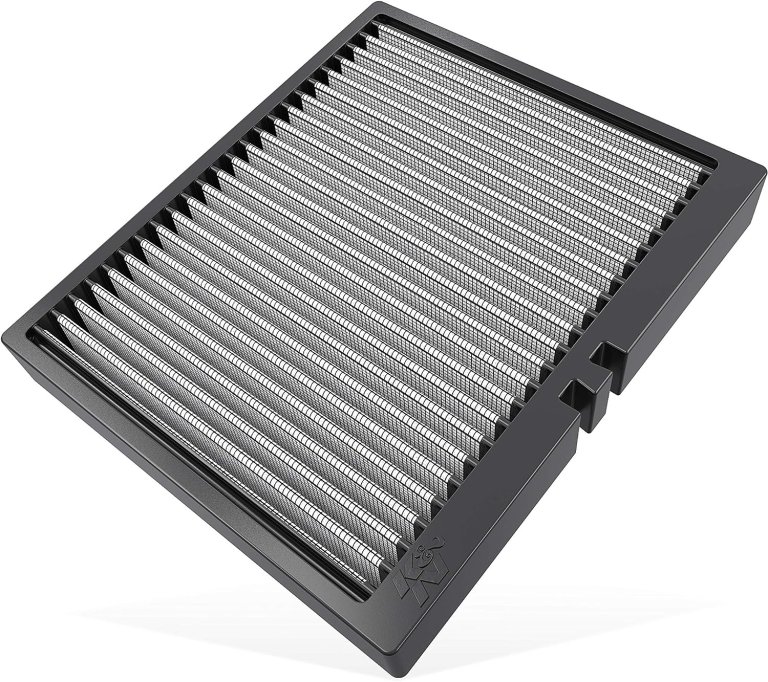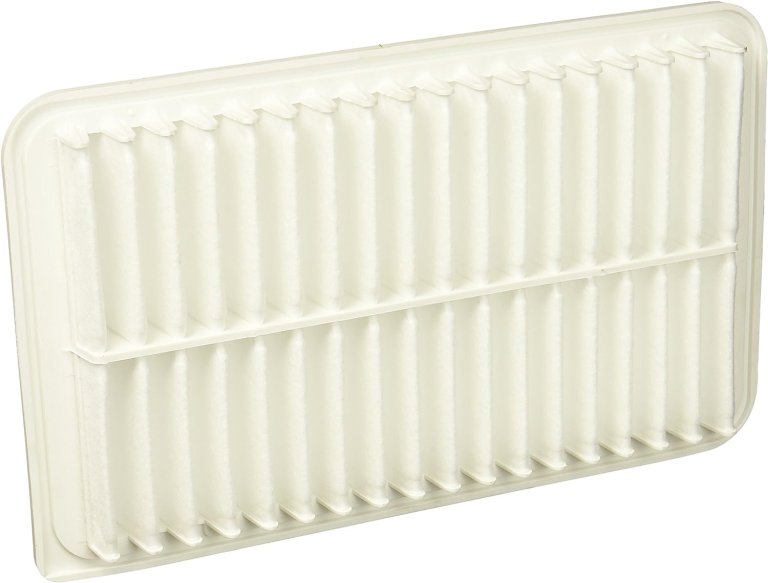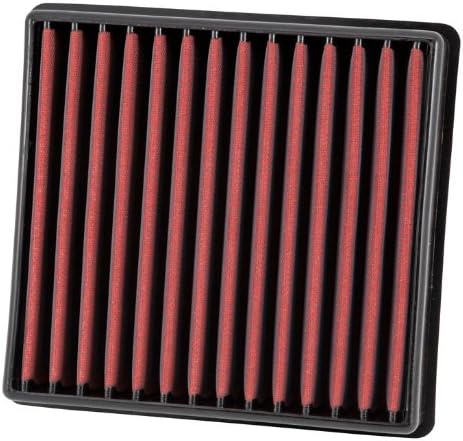We may earn revenue from the products available on this page and participate in affiliate programs. Learn more ›

Air filters are your car’s first line of defense to keep dirt, dust, and other debris from entering the engine. Once inside, these particles can wreak havoc with vital components and cost you thousands of dollars in repairs. Check out our picks for the best performance air filters for cars to help keep your engine clean and running smoothly.
Depending on how you count, a car has between 14,000 and 30,000 discrete components. Every one of them causes fretting, fussing, and much hand-wringing for engineers. The development of some components, such as volume knobs, has become so worrisome that some of the most competent car manufacturers have completely abandoned them. And, while we may lament the loss of beloved items like knobs, the average driver and even many enthusiasts, completely ignore more critical components — like say, a car’s air filter.
Yeah, the one that came with your car is a flappy paper origami accordion that you may only contemplate its existence when the service writer tells you it’s included in your $1,500 scheduled service, but it is a perfect example of one of the tens of thousands of components that are critical to your car’s long-term health. Buying the best air filter for your car shouldn’t be hard but with hundreds of types and brands, The Drive is here to help make the decision easier.
Our Methodology
As my audiologist can confirm, I’ve spent too much of my career standing next to loud cars running on chassis dynamometers. Air intake modifications are a perennial favorite of the tuning industry, so I have tested every variety you can imagine; from simple drop-in filters to polished aluminum cold-air induction kits, and all the way to custom-made carbon fiber airboxes. So, I have a good idea of what works and what doesn’t for performance.
I have never done any filtration testing — there, I said it. I feel better getting it out in the open. To supplement that particular hole in my knowledge base, data has been gathered from several academic research sources. Lastly, reviews from other media outlets and customers were stirred into the usual product rating gumbo. We like our gumbo spicy, so we also throw in some opinions. Bon appetit!
Summary List of Best Car Air Filters
- K&N Engine Air Filter
- BOSCH Workshop Engine Air Filter
- AEM DryFlow Air Filter
- BMC Carbon Racing Filter
- Hengst Air Filter
Best Car Air Filter Reviews & Recommendations
Best Overall
K&N Air Filter
See ItBest Value
Bosch Workshop Air Filter
See ItHonorable Mention
AEM DryFlow
See ItBest Air Filter For Exotics
BMC Carbon Racing Filter
See ItBest OE Quality Air Filter
Hengst Air Filter
See ItOur Verdict on Air Filters
As with any automotive product, there is far more opinion on air filters than actual data from scientific testing — or as Facebook continually proves, there is far more lavatory than laboratory data. Every home mechanic and dealer tech has a story about one filter that ruined a car in a hundred miles and another that allowed the engine to run for 300,000.
My pick for the best overall filter is the K&N Air Filter. Having used and tested countless brands in everything from daily drivers to race cars, I am confident oiled filters have no ill effects on vehicle components. And, while I haven’t done any filtration testing myself, and honestly wouldn’t be equipped to do so, data has convinced me that filtration efficiency is worth the extra cost.
FAQs
You’ve got questions. The Drive has answers.
A: While many carmakers share filter sizes between similar models, filters are anything but universal. Go to the filter manufacturer’s website and look up the part number for your car. You may need the following: year, make, model, trim, and powertrain information.
A: The simplest answer is to check your car’s owner’s manual. It will list a service interval and, in some cases, it will also list intervals for vehicles used in extreme conditions.
A: Most paper automotive filters are not recyclable. The paper is often coated and the frame would need to be separated from the medium.
A: Like any product, the Magnuson-Moss Warranty Act puts the burden of proof on the provider of the warranty that an aftermarket part caused a failure.
A: You may get slightly more power in some situations, but not enough to feel a difference in regular driving.
Oiled media filter: Oil has been used to trap dust in air filters for almost as long as internal combustion engines have existed. K&N was the first to popularize using oiled cotton in the 1960s, as opposed to the oil bath method invented decades earlier. K&N and other brands’ cotton medium is the most popular, but oiled foam is also common.
Experimental data has shown these types of filters offer higher efficiency for smaller particles since they are for lack of a better term, sticky. That filtering efficiency is there from the installation until servicing, making them at least predictable. The vast majority of oiled cotton filters are considered lifetime parts, which is always good.
Pleated paper filter: By far the most common type of filter you will find in the automotive world. They are cheap, good at filtering particulates, and you can change them quickly. The last point is particularly important to service centers where washing a filter and waiting for it to dry would leave a car sitting on a lift for more time than needed.
Maximum efficiency of the filter is obtained at some point after initial installation, meaning the first bit of service might include the inhalation of particulates considered harmful.
Depending on the filter, this load-up phase may be only a few hundred miles, so it might be irrelevant. This is the best choice for the average owner who never wants to think about an air filter.
Dry media filter: Using anything from woven polymers to expanded foam these work in much the same way as paper. The medium is made with various-sized holes that correspond to the size of the particles they are meant to stop. Like paper filters, these often require a load-up phase to reach full efficiency.
Good quality dry filters are considered lifetime parts. At the very least, they have lives in the tens of thousands of miles. The reusable models will require washing and drying, so they are not a drop-in and go like a paper filter. They will save owners the sometimes messy task of re-oiling.
